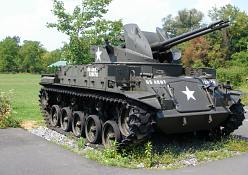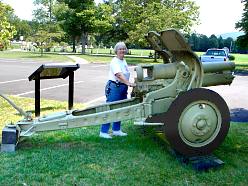 The wall contains the names of those from the 28th Infantry Division who died
during WWI at the battle of Argonne Forest in France near the town of Verdun
between Sep 26th and Nov 11th of 1918. The battle was part of the
final offensive of the war. It was the biggest operation of the American
Forces. By November over 1.2 million American, French, British, and other allies
were engaged. 117,000 American soldiers would not live to see the end of
the battle. I've been to the Vietnam Wall
The wall contains the names of those from the 28th Infantry Division who died
during WWI at the battle of Argonne Forest in France near the town of Verdun
between Sep 26th and Nov 11th of 1918. The battle was part of the
final offensive of the war. It was the biggest operation of the American
Forces. By November over 1.2 million American, French, British, and other allies
were engaged. 117,000 American soldiers would not live to see the end of
the battle. I've been to the Vietnam Wall and saw the 58,000 names, but that took a decade to cause. I had never seen so
many names of soldiers who all died on the same few days. We
wandered around the grounds for the remainder of the day. Along the way we
found yet another machine I had never seen before. The M42
"Duster" anti-aircraft defense weapon system which was developed
in 1953. Unfortunately, Russia had just introduced jet fighters which were
too fast for the twin 40mm to track. It might have disappeared into
obscurity had it not been for yet another war. In Vietnam, the Duster
found its niche suppressing enemy ground fire on convoys and in fixed defense positions.
and saw the 58,000 names, but that took a decade to cause. I had never seen so
many names of soldiers who all died on the same few days. We
wandered around the grounds for the remainder of the day. Along the way we
found yet another machine I had never seen before. The M42
"Duster" anti-aircraft defense weapon system which was developed
in 1953. Unfortunately, Russia had just introduced jet fighters which were
too fast for the twin 40mm to track. It might have disappeared into
obscurity had it not been for yet another war. In Vietnam, the Duster
found its niche suppressing enemy ground fire on convoys and in fixed defense positions.  Not
everything in the park was American made. Laura found an old artillery
piece made in England.
This old Howitzer was a British model, taken from the gun used by the Dutch in
the Boer War in South Africa. Rugged and portable, this gun proved a destructive
piece of equipment to the British infantry trying to put down a stubborn
rebellion. The British version remained in action for some 35 year and saw
action in both WWI and WWII. Designated as QF, 4.5 Inch Howitzer Mark II
it was a geat example of the ingenuity of the gun makers of the time. Our
last stop was quite a visit. I had wanted to see one of the backbones of
WWII: the Sherman Tank. This was the main battle tank of the U. S.
Army and the vehicle that helped make General Patton a household name.
Nearly 50,000 of the them saw action in WWII and Korea. Pennsylvania
foundries produced many of the parts as well as the turret. Considered a lightweight against the mighty "Tiger
II" of the Panzer Corp, Hitler's prized tank division, the Sherman carried
only a
Not
everything in the park was American made. Laura found an old artillery
piece made in England.
This old Howitzer was a British model, taken from the gun used by the Dutch in
the Boer War in South Africa. Rugged and portable, this gun proved a destructive
piece of equipment to the British infantry trying to put down a stubborn
rebellion. The British version remained in action for some 35 year and saw
action in both WWI and WWII. Designated as QF, 4.5 Inch Howitzer Mark II
it was a geat example of the ingenuity of the gun makers of the time. Our
last stop was quite a visit. I had wanted to see one of the backbones of
WWII: the Sherman Tank. This was the main battle tank of the U. S.
Army and the vehicle that helped make General Patton a household name.
Nearly 50,000 of the them saw action in WWII and Korea. Pennsylvania
foundries produced many of the parts as well as the turret. Considered a lightweight against the mighty "Tiger
II" of the Panzer Corp, Hitler's prized tank division, the Sherman carried
only a  76
mm cannon and two 30cal. machineguns. On a one-to-one ration, it was no
match for the larger and heaver German tanks. Its claim to fame was in its
mass production. The U.S. could produce the Sherman faster than the
Germans could destroy them. Finally the Shermans were able to gang up on
the German tanks and overpower them by sheer number. Because the
Tiger parts were individually machined to a precise tolerance and as such were
slow to reach the front. Subsequently when a Tiger broke down, it often
stayed down for long periods of time. Near the end of the war, Allied
bombing put a stop to the flow of parts and many Tigers just quit running and
were
abandoned. The Sherman, on the other hand, worked off stamped parts, and
supplies were ample, keeping them running right up to the end of the War.
Much of this I got from a delightful man we met near the Sherman. 83 year
old Ben Shrum served in the 738th Tank Battalion of the 1st Army Div. in
Germany. We stood there for an hour listening to the stories he told of
the days of the war and the action he saw. It was a rare and interesting
experience. This rounded out our visit to the museum and Shrine, which is
truly a tribute to those who fought, died and came from Pennsylvania.
76
mm cannon and two 30cal. machineguns. On a one-to-one ration, it was no
match for the larger and heaver German tanks. Its claim to fame was in its
mass production. The U.S. could produce the Sherman faster than the
Germans could destroy them. Finally the Shermans were able to gang up on
the German tanks and overpower them by sheer number. Because the
Tiger parts were individually machined to a precise tolerance and as such were
slow to reach the front. Subsequently when a Tiger broke down, it often
stayed down for long periods of time. Near the end of the war, Allied
bombing put a stop to the flow of parts and many Tigers just quit running and
were
abandoned. The Sherman, on the other hand, worked off stamped parts, and
supplies were ample, keeping them running right up to the end of the War.
Much of this I got from a delightful man we met near the Sherman. 83 year
old Ben Shrum served in the 738th Tank Battalion of the 1st Army Div. in
Germany. We stood there for an hour listening to the stories he told of
the days of the war and the action he saw. It was a rare and interesting
experience. This rounded out our visit to the museum and Shrine, which is
truly a tribute to those who fought, died and came from Pennsylvania.
*** THE END ***
